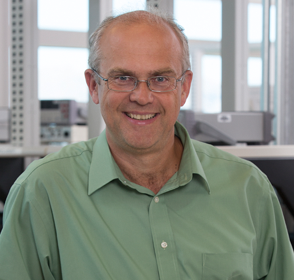
Thomas Vogelsang
Fellow
Research Areas: Imaging
As a landscape photographer, I’ve always been interested in how to capture the perfect image, where light and depth come together in perfect exposure. In 2010, together with my colleague Michael Ching, we started developing Binary Pixel Imager technology, as a way to capture light closer to the capabilities of the human eye.
Our approach captures a dynamic range that produces dramatically better videos and photos from mobile and consumer devices that include the full gamut of details in dark and bright intensities.
Between my elementary school days and today, I’ve come to see inventing as a competitive sport. There is unquestionably a race to get the best idea on file at the patent office before your competitors do. I find this aspect of invention very compelling, as multiple groups of very talented people all across the world are trying to find the most elegant solutions to big, valuable problems.
At Rambus, I’m allowed the opportunity of open-ended exploration, something I thoroughly enjoy as an inventor. With Binary Pixel for instance, it all started when Michael and I identified an early university paper on the visionary works of imaging and signal processing. Together we worked on those initial findings to develop not only a solution but also to rethink the actual challenge and problem with imaging today. And that’s how Rambus Binary Pixel Imager technology came about.
Prior to Imaging, I spent the last 20 years working with DRAM, DRAM reliability and low power DRAM, both at Rambus and otherwise. A majority of my 30+ patents are within the semiconductor space and it’s a research area I’m still passionate about too.
Education
- Diplom Physiker (Universität) and Doctor rerum naturae in physics, both from the Technical University in Munich, Germany
Recent Publications
- J. Zhang, F. Yang, T. Vogelsang, D. Stork and M. Vetterli, MULTICHANNEL SAMPLING OF LOW LIGHT LEVEL SCENES WITH UNKNOWN SHIFTS, International Conference on Image Processing, Melbourne, Sep 2013
- T. Vogelsang, M. Guidash, S. Xue, Overcoming the Full Well Capacity Limit: High Dynamic Range Imaging Using Multi-Bit Temporal Oversampling and Conditional Reset, International Image Sensors Workshop, Snowbird Utah, June 2013
- T. Vogelsang and D. Stork, High-Dynamic-Range Binary Pixel Processing Using Non-Destructive Reads and Variable Oversampling and Thresholds, IEEE Sensors, Taipei, Oct 2012
- T. Vogelsang, Understanding the Energy Consumption of Dynamic Random Access Memories, 43rd Annual IEEE/ACM International Symposium on Microarchitecture, Atlanta, Dec 2010
Recent Speaking Engagements
- “High Dynamic Range Imaging Using Multi-Bit Temporal Oversampling and Conditional Reset” at the International Image Sensors Workshop, June 2013
- “Binary Pixel and High Dynamic Range Imaging”, SCIEN (Stanford Center for Image Systems Engineering) Colloquium Series, April 2013
“Understanding the Energy Consumption of Dynamic Random Access Memories”, International Symposium on Microarchitecture, 2010
